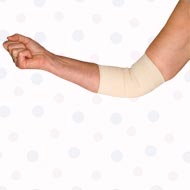Yoga for Elbow Dislocation
Stress on the joint, injury or repetitive motions can cause various degrees of injuries including dislocations, fractures, sprains, strains, or even just a bursting pain in the joint. Dislocation of the elbow occurs frequently and is between 10-25 percent of injuries of the elbow.
It's important that the healing occur properly.
Dislocation is not always easily visible, and in such cases it is frequently possible to not treat it correctly. Wrong or ineffective treatment will not only worsen the problem, but also cause irreversible damage to the joint. Complete recovery of this joint, when diagnosed in time, can take up to 14 weeks.
In up to 15 per cent of the injuries, there is always a permanent restriction of the elbow. Dislocation can vary from a basic dislocation where the bone has shifted without any injury to a severe dislocation in which not only is there bone damage but even nerve endings and muscle damage can be seen. X-ray will usually confirm the damage or extent of the dislocation. Common treatment to treat severe elbow dislocation includes surgery. The aim of the treatment is to reduce pain.
If the dislocation is not severe, doctors suggest non-surgical means of treatment. There are elbow strengthening exercises that include various stretches that stretch the elbow joint gently. These stretches should be initially done under the supervision of a practitioner. You want to ensure that you do the exercises correctly and not aggravate the injury.
There are some yoga poses that can also be done to strengthen and heal your elbow dislocation. Downward facing dog pose – When you get into the pose of an inverted V, you are taking your weight gradually from wrist to elbow and shoulders. Though this pose strengthens the shoulder and back muscles, it is a good pose to improve the health of the elbow joint too. It’s important to remember that you shouldn’t do this pose if your elbow is sore. The pose can strengthen your elbow joint once you have healed from the dislocation. Half lord of the fishes pose is another pose that can improve the strength of the elbow joint.
Reference:
- http://www.ncbi.nlm.nih.gov/pubmed/22513954
- http://touchbase.gov.au/2011/05/yoga-and-the-art-of-rehabilitation/
Read more articles from the Yoga Asana Benefits Category.
 Find Pose
Find Pose

